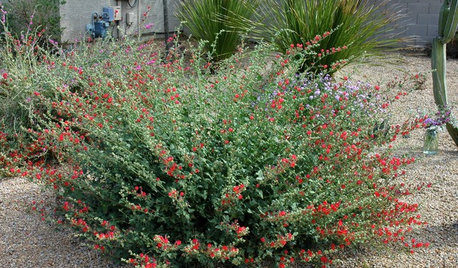Fertilizing Species Roses?
fogrose
10 years ago
Related Stories

GARDENING GUIDESGet on a Composting Kick (Hello, Free Fertilizer!)
Quit shelling out for pricey substitutes that aren’t even as good. Here’s how to give your soil the best while lightening your trash load
Full Story
GARDENING GUIDESHow to Switch to an Organic Landscape Plan
Ditch the chemicals for a naturally beautiful lawn and garden, using living fertilizers and other nontoxic treatments
Full Story
GARDENING GUIDESCommon Myths That May Be Hurting Your Garden
Discover the truth about fertilizer, soil, staking and more to keep your plants healthy and happy
Full Story
GARDENING GUIDESWhat Kind of Roses Should You Grow?
Want to add the beauty of roses to your garden? Find out which ones, from old-fashioned to modern, are right for you
Full Story
WINTER GARDENINGPruning Secrets for Exquisite Roses
Encourage gorgeous blooms year after year with this time-tested advice on how to prune your rosebush in winter for health and shape
Full Story
GARDENING GUIDES6 Wonderfully Easy Roses for Any Gardener
Look like an expert even if you're just starting out, with these low-maintenance gems of the rose world
Full Story
GARDENING GUIDES6 Captivating Roses for an Alluringly Fragrant Garden
Perfume your garden with aromas from richly spicy to lightly sweet, without sacrificing an inch of color
Full Story
GARDENING GUIDESSouthwest Gardener's February Checklist
Orange you glad for a citrus-fertilizing reminder? And don't forget the recommended doses of vegetable seeds and cold-hardy flowers
Full Story
SPRING GARDENINGHow to Grow a Rose Garden in Pots
Everything can come up roses, even without a plot of soil in sight. This step-by-step guide to growing roses in containers shows you how
Full Story
GARDENING GUIDESHow to Keep Your Citrus Trees Well Fed and Healthy
Ripe for some citrus fertilizer know-how? This mini guide will help your lemon, orange and grapefruit trees flourish
Full Story








malcolm_manners
fogroseOriginal Author
Related Professionals
Lakewood Landscape Architects & Landscape Designers · Buford Landscape Contractors · Secaucus Landscape Contractors · Vacaville Landscape Contractors · Northlake Landscape Contractors · Englewood Swimming Pool Builders · Fair Oaks Swimming Pool Builders · Grand Rapids Swimming Pool Builders · West Palm Beach Swimming Pool Builders · Greenville Siding & Exteriors · Rochester Siding & Exteriors · Spartanburg Siding & Exteriors · West Bloomfield Township Siding & Exteriors · Westminster Siding & Exteriors · Menomonee Falls Siding & Exteriorsroseseek
fogroseOriginal Author
User
mendocino_rose
Tessiess, SoCal Inland, 9b, 1272' elev
eahamel
malcolm_manners
fogroseOriginal Author